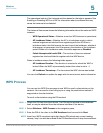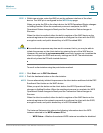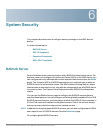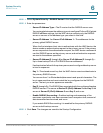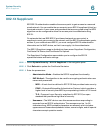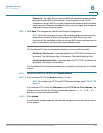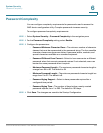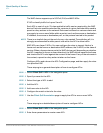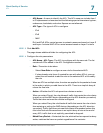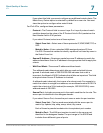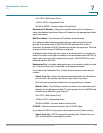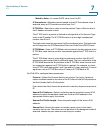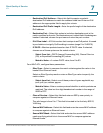
System Security
WPA-PSK Complexity
Cisco Small Business WAP551 and WAP561 Wireless-N Access Point 110
6
WPA-PSK Complexity
When you configure VAPs on the WAP device, you can select a method of
securely authenticating clients. If you select the WPA Personal protocol (also
known as WPA pre-shared key or WPA-PSK) as the security method for any VAP,
you can use the WPA-PSK Complexity page to configure complexity requirements
for the key used in the authentication process. More complex keys provide
increased security.
To configure WPA-PSK complexity:
STEP 1 Select System Security > WPA-PSK Complexity in the navigation pane.
STEP 2 Click Enable for the WPA-PSK Complexity setting to enable the WAP device to
check WPA-PSK keys against the criteria you configure. If you uncheck the box,
none of these settings are used. WPA-PSK Complexity is disabled by default.
STEP 3 Configure the parameters:
• WPA-PSK Minimum Character Class—The minimum number of character
classes that must be represented in the key string. The four possible
character classes are uppercase letters, lowercase letters, numbers, and
special characters available on a standard keyboard. Three is the default.
• WPA-PSK Different From Current—Select one of these options:
- Enable—Users must configure a different key after their current key
expires.
- Disable—Users can use the old or previous key after their current key
expires.
• Maximum WPA-PSK Length—The maximum key length in number of
characters is from 32 to 63. The default is 63.
• Minimum WPA-PSK Length—The minimum key length in number of
characters is from 8 to 16. The default is 8. Check the box to make the field
editable and to activate this requirement.
STEP 4 Click Save. The changes are saved to the Startup Configuration.



